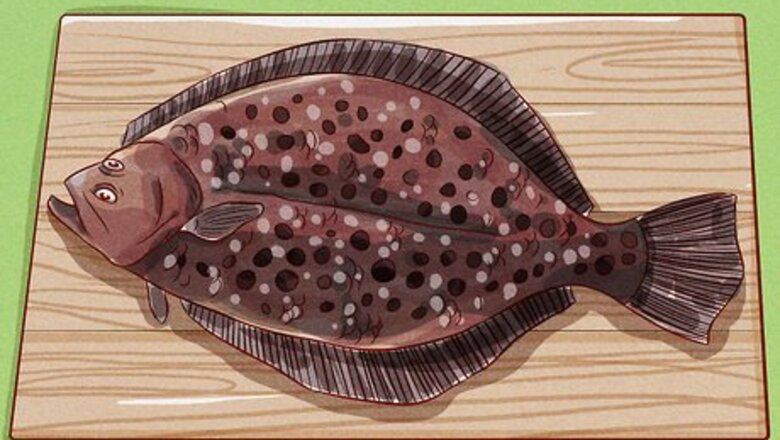
views
Scaling the Flounder
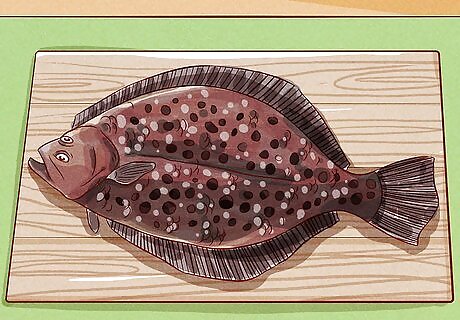
Lay the flounder on a flat surface and hold it firmly by the tail. Most healthy flounder are covered in a fine layer of clear slime which keeps them safe in the water. To remove this, you have to scale the flounder. Place the flounder on a clean, flat surface such as a cutting board. Place your non-dominant hand on the tail to hold it in place. Removing the scales can be business. If you’re worried about messing up the kitchen, place a layer of newspaper or a plastic bag over the cutting board for easier clean up.Warning: If the flounder’s slime coating is a milky white color, discard the fish immediately. This means that the meat has spoiled.
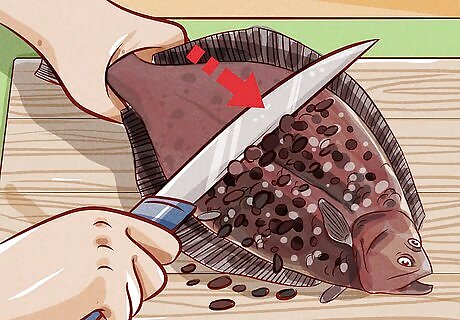
Scrape the back of a knife from the tail to the head. Hold a knife with the blunt side flat on the flounder’s skin. Then, drag the knife along the skin until you reach the head of the fish. Repeat this motion, working from the tail to the head, until all of the slime and most of the scales have been removed. Remember to rinse off your knife as needed to remove excess slime and scales from the back of the blade. If you have a fish scraper, you can use that instead of the back of a knife.
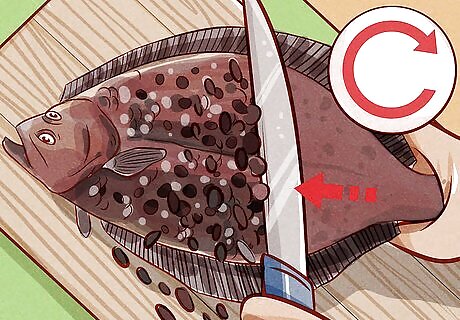
Flip the fish over and scrape the other side. Once you’ve removed the scales and slime from one side, pick up the flounder and turn it over to expose the other side. Hold the tail again with your non-dominant hand, and scrape from the tail to the head with the back of the knife. Don’t worry about setting the fish on top of some of the scales that have flaked off. You’ll be rinsing the flounder after you scale it.
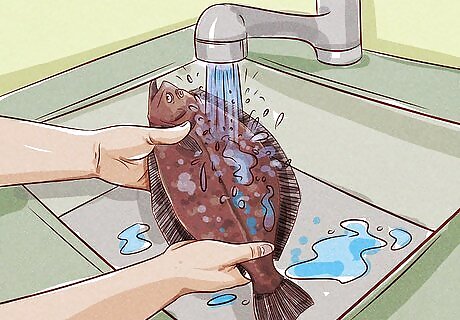
Rinse the flounder under cool running water to remove excess scales. Carefully transfer the fish to a sink and turn on the cool water. Be sure to clean both sides of the fish, and use your hands to rub the skin and remove any scales that may be stuck to the surface. The skin should feel clean, not slimy or slick. If it does feel slimy, try scaling both sides again to see if any additional slime collects on the knife.
Cutting Fillets
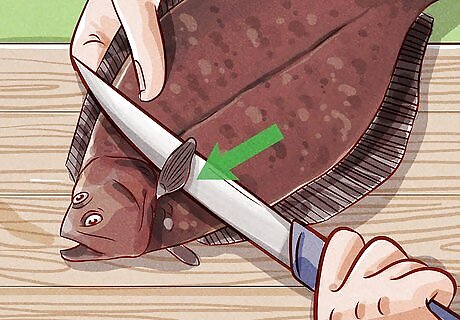
Cut a vertical line behind the head from the top of the fish to the bottom. With a small, sharp knife, slice the fish through the skin just behind the head and past the side fin. The knife should reach the bones of the fish, but not cut through them. Do this on both sides of the fish, and then choose which side to start filleting. This vertical line will likely be somewhere near the gills, depending on the anatomy of the fish.
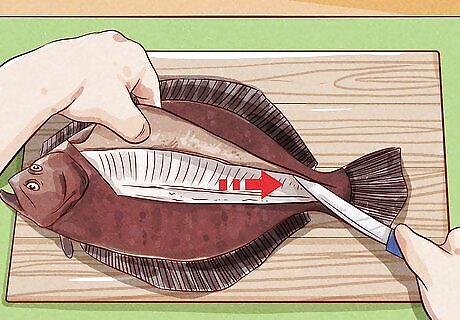
Score horizontally across the spine to the tail. Find the flounder backbone, which runs down the middle of the fish from the gills to the tail. Cut along this line, from the center of the gills to the tail. Follow the backbone while cutting. Remember that you should cut through the skin to the bone, but don’t press the knife through the bone.
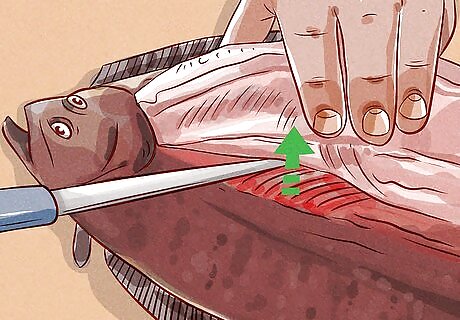
Slice from the center of the spine to the fins, along the ribs. Insert the tip of the knife under the skin, along the backbone. Slice from the gill along the ribs to the tail. Continue cutting until the fillet is separated from the backbone, and leave the flesh attached on the outer edges of the carcass. You should be working from the center vertical line outward to the fin around the edge of the flounder’s body.
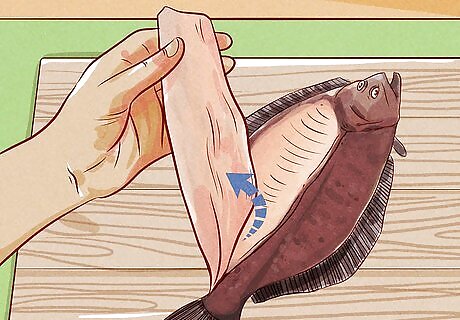
Peel the fillet upward as you cut through the meat. While moving the knife, continue lifting the side of the fish that you’re cutting. Hold the meat of the fillet as you separate it from the bone, and peel it backward so that it’s only attached along the outer edges of the carcass. As you peel the fillet away from the carcass, you should be able to see the ribs and spine of the fish. If not, try cutting your fillet a little thicker next time.

Remove the fillet from the fins and turn the fish over to repeat the process. Cut along the outer edge of the carcass to remove the fillet. Then, turn the fish over and make the same incisions under the flesh and next to the backbone. Cut the fillets in the same manner on this side until you’ve made as many fillets as possible, which is usually 2-4.Tip: If you want to remove the skin before cooking the fish, simply place the fillet with the skin facing up, and carefully insert the knife under the skin. Cut across the fillet until the skin is separated from the meat.
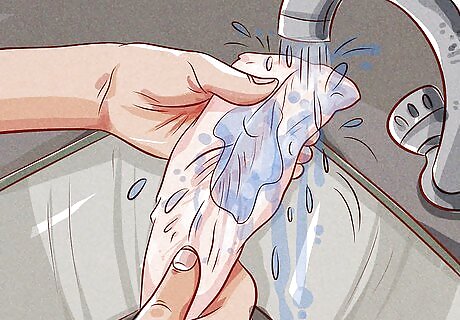
Rinse and chill the fillets immediately until you’re ready to cook them. Run the fillets under a steady stream of cool, running water to clean them off before storing. Then, place the meat in an airtight container and store it in the refrigerator until you’re ready to cook the meat. If you’re planning to cook the fish at a later date, it’s best to freeze it and thaw it before cooking. There are quite a few ways to prepare flounder, such as baking, grilling, or sauteing!




















Comments
0 comment